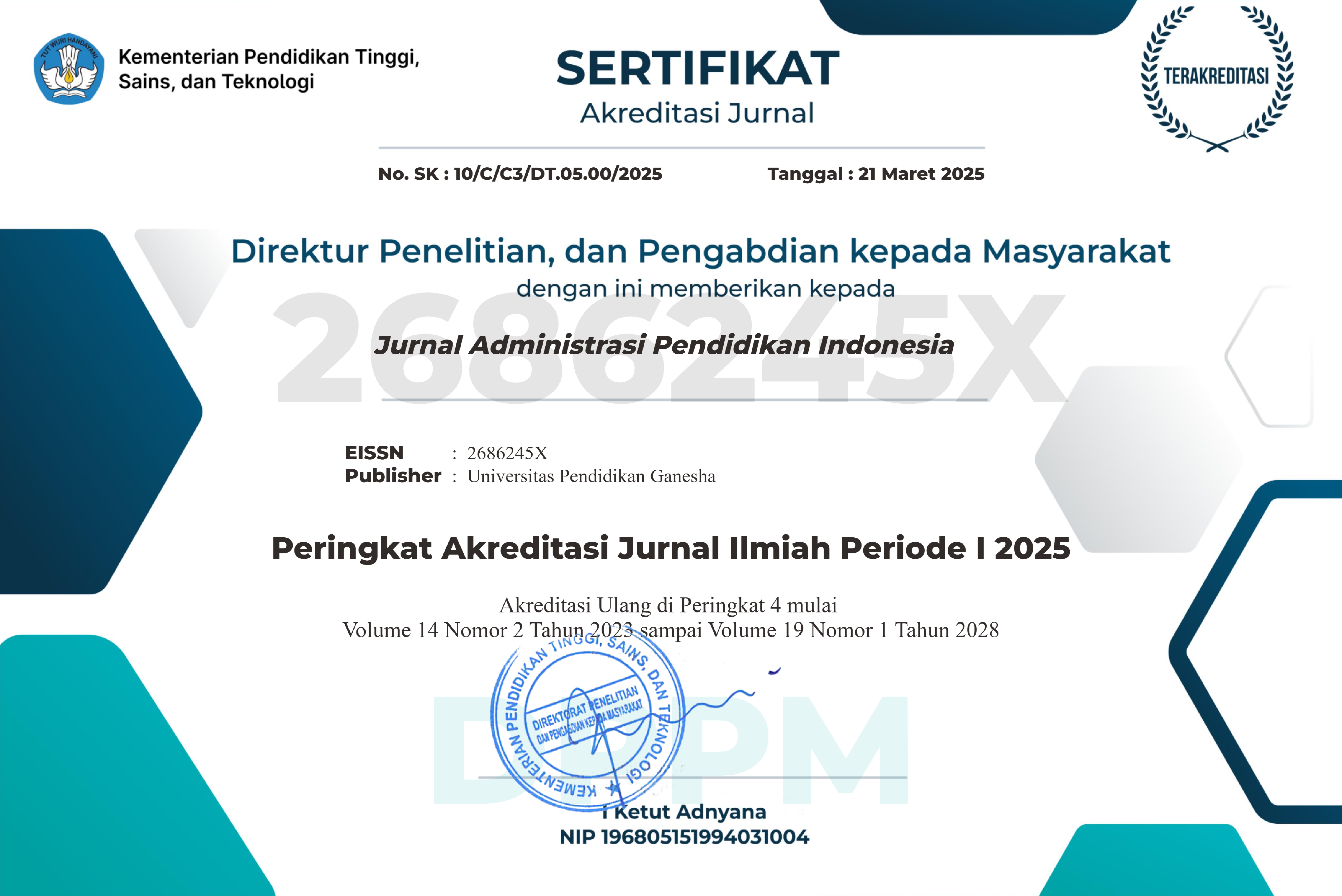Evaluation Study of the Implementation of the Principal's Supervision Program at SMP Negeri 3 Kuta
DOI:
https://doi.org/10.23887/jurnal_ap.v13i1.947Keywords:
evaluation, academic supervision, headmasterAbstract
The study was conducted in order to evaluate and describe the supervision implemented by the headmaster of SMP Negeri 3 Kuta, on the following components: (1) context including the underlying regulations, vision-mission, the goals and commitment of school supervisors, (2) input, including academic supervising competencies, academic supervising program, and supporting facilities, (3) process including the implementation of academic supervision, (4) product, including the teachers’ performances.The study was conducted at the total number of 32 teachers of SMP Negeri 3 Kuta in academic years 2021-2022 and designed in terms of ¬ex-post facto using CIPP model from Stufflebeam. There were about 32 respondents involved as the samples, consisting of school supervisors and science teachers. They were determined based on cluster proportional random sampling technique using Robert V.Krejcie and Daryle W.Morgan table. The data required were collected by using questionnaires, and analyzed based on descriptive quantitative approach with the formula of univariat with ideal theoretic criterion and Glickman quadrant converted into T-score. The results of univariat analysis indicated that in terms variable context the result was effective, and in terms variable input the result was effective, in terms variable process the result was also effective, and the variable product, it was also effective. From the T-score analysis, the results indicated that in terms of context variable, T >50, meaning that it was positive (effective), in terms of input variable, T > 50, meaning that it was positive (effective), in terms of process variable, T >50, meaning it was also positive (effective), while in terms of product variable, T ≥ 50, meaning that it was negative (ineffective). The categories were found different because they were occurred as the results of different use of technique of analysis (criteria), univariat analysis used theoretic criterion based on mean ideal and standard deviation ideal, while T-score was the figures indicating the comparison of different respondent scores from mean and standard deviation. From the T-score analysis it could be concluded that the implementation of supervision program of headmaster at SMP Negeri 3 Kuta was found effective
References
Arikunto, S. (2006). Prosedur Penelitian Suatu Pendekatan Praktek Edisi Revisi VI. PT. Rineka Cipta.
Brown, H. (2007). Principles of Language Learning and Teaching. Inc. A Pearson Education Company.
Depdiknas. (2001). Manajemen Peningkatan Mutu Berbasis Sekolah.
Made, P. (1992). Pemikiran Tentang Supervisi Pendidikan. Bumi Aksara.
Nanda, Y., & Suyanto, T. (2019). Pembentukan Kedisiplinan Siswa Melalui Program Pendidikan Karakter “Dedicate” Di SMA Muhammadiyah 2 Surabaya. Kajian Moral Dan Kewarganegaraan, 1504025401, 1301–1315.
Sax, G. (1989). Principles of Education and Psychological Measurement ad Evaluation. Belmout Wadswoth. Inc.
Stufflebeam, D. L., J, A., & Shinkfield. (1986). Systematic Evaluation: A Self-Intructional Guide to Theory and Practice. Kluwer-Nijhoff Publishing.
Sujana, N. (2007). Pengembangan Pengawasan Satuan Pendidikan.
Tilaar, H. A. . (1999). Pendidikan, Kebudayaan, dan Masyarakat Madani Indonesia. PT Remaja Rosdakarya.
Tri Yuni Hendrowati. (2015). Pembentukan pengetahuan lingkaran melalui pembelajaran asimilasi dan akomodasi teori konstruktivisme Piaget. Jurnal E-DuMath, 1(1), 1–16.











